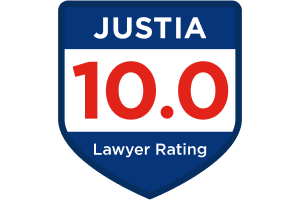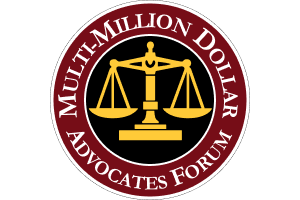Evaluating Your Personal Injury Case
Ira H. Leesfield
Leesfield & Partners
2350 South Dixie Highway
Miami, Florida 33133
(305) 854-4900
1. Client Considerations
- Personal History
- Work History
- Claims History
- Employment and Stability of Client
- Before and After Witnesses/Client’s Community of Friends and family
- Presentation of the Client at Deposition and Trial
- Client’s Expectations
- Client Impression
2. Evaluating the Venue, Jury Selection and Verdicts/Settlement History
- Know your Venue
- Use of Jury Research
- Prior Verdicts and Settlements
- Jury Consultant/ Mock Juries/Theme Development
3. Liability/Damages/Insurance Coverage
- Evaluation of Liability/the Non-obvious Defendant
- Medical Negligence Case/Expert Evaluation/Coverage
- Automobile Liability/Seatbelts/Comparative Negligence
- Automobile Coverage/Uninsured Motorist Coverage/Long Term Lease
- Vicarious Liability/Ownership of Vehicle/Dangerous Instrumentality
- Vicarious Liability/Employment/Course of Employment/Responding to Superior
| Cases to be discussed: | The Reed Case Williams/Gates Eid v. Pinewood Material Keen v. Florida Keys and Dorris |
4. Premises Liability
- Issues in Premises Liability cases
(1) Notice to Owner
(2) Liability of Owner v. Liability of Lessee and/or tenant
(3) Foreseeability
| Cases to be discussed: | Valdes v. Ace Hardware |
Paul v. Sea Watch of Panama City Beach, Inc., 643 So.2d 665 (Fla 1st DCA 1994).
Ashcroft v. Calder Race Course, Inc., 492 So.2 1309 (Fla. 1986)
Landowners have a duty to exercise reasonable care for the protection of their invitees.
- To keep their premises in a reasonably safe condition;
- To give timely notice of latent or concealed perils which are known to the landowner, or which should be known to him by exercise of reasonable care. Florida East Coast R.Y. Company v. Shulman, 481 So.2d 965 (Fla. 3d DCA 1986); Pedreira v. Silva, 468 So. 2d 1073 (Fla. 3d DCA 1985); Waterman v. Graham, 228 So. 2d 925 (Fla. 2d DCA 1969).
- To warn of concealed dangers which are or should be known to the owner, but which the invitee cannot discover through the exercise of due care; and
- to keep its property in a reasonably safe condition.
Miami Coin-O-Wash, Inc. v. McGough, 195 So.2d 227, Fla.App. 1967
This duty of care is determined by the failure of a person who is in actual possession and control, whether a construction contractor or other possessor with authority or control, to use due care to warn or to exclude, licensees and invitees from areas known to the possessor to be dangerous because of operations or activities or conditions. Worth v. Eugene Gentile Builders, Inc., 697 So.2d 945 (Fla. 4th DCA 1997); Haynes v. Loyd, 533 So.2d 944 (Fla. 5th DCA 1988).
The occupant of premises is liable for latent defects which proximately cause injury to his invitees, the occupant being bound to exercise a reasonable degree of care commensurate with surrounding circumstances. Breeding’s Dania Drug Co. v. Runyon, 2 So.2d 376 (Fla. 1941).
Levy v. Home Depot, Inc., 518 So.2d 941, Fla. App. 3 Dist., 1987.
Property owner or occupier has two duties toward invitees: to keep property in reasonably safe condition; and to warn invitee of concealed dangers which are or should be known to owner or occupier, but which cannot be discovered by invitee through exercise of due care.
It is well settled that “the duty of a landowner to a business invitee is to maintain the premises in a reasonably safe condition and to warn the invitee of latent perils which are known or should be known to the owner, but which are not known to the invitee or which, by the exercise of due care, could not be known to him.”
Crawford v. Miller, 542 So.2d 1050, 1051 (Fla. 3d DCA 1989), quoting Storr v. Proctor,
490 So.2d 135, (fla. 3d DCA), rev. denied, 500 So.2d 546 (Fla. 1986); Levy v. Home Depot, Inc., 518 So.2d 941, 942 (Fla. 3d DCA 1987). “an owner is entitled to assume that the invitee will perceive that which would be obvious to him upon the ordinary use of his own sense[s], and is not required to give the invitee notice or warning of an obvious danger.” Crawford, 542 So.2d at 1051 (citations omitted).
Clerkin v. Kendall Town & Country Associates, 535 So.2d 288 (Fla. 3d 1989)
Holding:
Property owner owed no duty to exercise reasonable care for safety of subcontractor’s employee who had been invited onto property to work on construction project, where property owner had hired general contractor and did not serve as its own general contractor on project, and where property owner’s participation in construction project was merely in nature of insisting that established time schedules be honored, but not to influence manner in which work was performed.
A property owner or occupier has a duty to keep its premises in a reasonably safe condition and to protect the invitee from dangers of which the owner is or should be aware. Newalk v. Florida Supermarkets, Inc. 610 So.2d 528 (Fla. 3d DCA 1993); Levy v. Home Depot, 518 So. 2d 941 (Fla. 3d DCA 1988). This duty of care is determined by the failure of a person who is in actual possession and control, whether a construction contractor or other possessor with authority or control, to use due care to warn or to exclude, licensees and invitees from areas known to the possessor to be dangerous because of operations or activities or conditions. Worth v. Eugene Gentile Builders, Inc. 697 So.2d 945 (Fla. 4th DCa 1997); Hanes v. Loyd, 533 So.2d 944 (Fla. 5th DCa 1988). Moreover, for work performed by the contractor which remains unfinished and under his charge, the contractor is subject to the same liability to others for harm resulting from that particular work entrusted to him as though the contractor were the possessor of the land. Worth, 697 so.2d at 948; citing, Cockerham v. R.E. Vaughan, Inc. 82 So. 2d 890 (Fla. 1955); see also, Slavin v. Kay, 108 So. 2d 462 (Fla. 1958) (so long as the premises are under the contractor’s control, he has a “duty to the whole world” to exercise due care.)
In Williams v. Madden, 588 So.2d 41 (Fla. 1st DCA 1991) the First District Court of Appeals held that a possessor of land is liable even for known or obvious conditions where the landowner should anticipate the harm despite such kowledge by the injured party and despite the “obviousness” of the defect. See also McAllister v. Robbins, 542 So.2d 470 (Fla. DCA 1989); and Metropolitan Dade County v. Yelvington, 392 So.2d 911, 913 (Fla. 3rd DCA) review denied, 389 So.2d 1113 (Fla. 1980) (where a possessor of land should anticipate the harm which may be caused by a condition on the land, he may be liable despite the obviousness of the hazard).
Statute §767.04 imposes absolute liability upon a dog owner for a dog-bite when the dog-bite victim is in a public place or lawfully on or in a private place except when the dog is carelessly or mischievously provoked or when the owner has displayed in a prominent place on the prmises a sign easily readable including the words “Bad Dog” (or equivalent wording). See Romfh v. Berman, 56 So.2d 127 (Fla. 1951).
5. Product Safety
- Issues in Product Safety Cases
- Consumer Products
- Industrial Machines
| Cases to be discussed: | Martin v. Florida Keys Community College The Gugliatti Case |
6. Negligent Security, Negligent Hiring, Negligent Retention
- Cases best suited to a cause of action.
- Issues in Negligent Security, Negligent Hiring, and Negligent Retention cases.
(1) Foreseeability
(2) Duty
(3) Negligence
(4) Causation
(5) Apportionment — Intentional Tortfeasor v. Negligent Tortfeasor
(6) Damages
| Cases to be discussed: | Searstown Mall Seacamp Cases |
7. Maritime and Admiralty/Jones Act/DOSHA
- Introduction: Maritime, Admiralty, Jones Act, and DOSHA
- Significant Decisions
Yamaha Motor Corp. v. Calhoun, 116 S. Ct. 619 (1996).
Twelve year old Natalie Calhoun was vacationing with her parents when she was killed in a collision in territorial waters off Puerto Rico while riding a rented jet ski manufactured and distributed by Yamaha. The holding: in maritime wrongful death cases in which no federal statute specifies the appropriate relief and the decedent was not a seaman, long shore worker, or person otherwise engaged in a maritime trade, state remedies remain applicable and have not been displaced by the wrongful death action recognized action recognized in Morgane v. States Marine Lines, Inc., 398 U.S. 375 (1970). Although the Calhouns sought damages for lost future earnings, loss of society, support and services as well as punitive damages, Yamaha contended that federal maritime action displaced all remedies afforded by state law, i.e. the Calhouns could only recover Natalie’s funeral expenses as damages. The Third Circuit, under its discretion, granted an interlocutory appeal over this question alone instead of limiting itself to the particular questions of law formulated for review. It held that Morgane, a case which is a compromise between the strict liability of the unseaworthiness doctrine and negligence-based state wrongful death statutes, is merely a gap-filling measure to insure that seamen and their survivors would all be treated alike. The “humane and liberal purpose” behind the general maritime remedy of Morgane was driven by the idea that survivors of seamen killed in territorial waters should not be barred from recovery simply because the tort system of the particular state in which the seaman died did not incorporate special maritime doctrines. Morgane showed no hostility to concurrent applications of state wrongful death statutes. Furthermore the provisions of DOHSA, we discussed in the Korean Air Lines case, by its terms do not displace state law in territorial waters: The provisions of any State statute giving or regulating rights of actions or remedies for death shall not be affected by this chapter. 46 U.S.C. App. §767. The only question remaining is whether Pennsylvania’s wrongful death remedies or Puerto Rico’s applies. Cases:
Zicherman v. Korean Air Lines Co., Ltd., 116 S. Ct. 629 (1996).
In a landmark decision, the Supreme Court of the United States set out what damages are applicable for deaths occurring on the high seas. The respondent was a passenger on the Korean Air Lines’ Flight KE007 when it was shot down over the Sea of Japan. The Court overruled the lower court’s determination that the general maritime law suppled the substantive compensatory law and instead, ruled that the Death on the High Seas Act (DOHSA) applied. What result? The DOHSA does not recognize claims for loss of society. Surprisingly, the Court did not make a clear determination as to the damages for loss of support and inheritance, pain and suffering, the jury awarded to the decedent’s sister and mother, because the defendants did not challenge these rulings in their petition for certiorari.
The crash occurred due to the “willful misconduct” of the flight crew en route from Anchorage, Alaska, to Seoul, South Korea. The plane strayed into the airspace of the Soviet Union and was shot down over the sea of Japan. At first, the determination of “willful misconduct” lifted the Warsaw Convention’s $75,000 cap on damages. However, the $50 million in punitives the jury subsequently awarded, had to returned because the Warsaw Convention does not permit the recovery of punitive damages. In the end, the Court explained the following road map, in to illustrate which law applies. The impact to your firm . . . based on the road map, you can decide whether the case is worth taking on.
Which Law to Apply
The Convention left to domestic law the questions of who may recover and what compensatory damages are available to them. So, compensable harm is to be determined by domestic law selected by the courts of the contracting states. In this case the issue of compensable harm is unresolved by the Warsaw Convention, and the parties have agreed that it is governed by the law of the United States.
Choice of law is determined by the forum jurisdiction, and that would normally be a question confronting the court and litigators at this point. Instead, in this case, the only question the Court had to determine is which particular United States law provides the governing rule. Congress may choose to enact special provisions applicable to Warsaw-Convention cases, as some countries have done. Absent such legislation, Articles 17 and 24(2) provide a loophole authorizing courts to apply the law that would govern in the absence of the Convention. The death that occurred, falls within the literal terms of DOHSA § 761: “whenever a death of a person shall be caused by wrongful act. . . occurring on the high seas beyond a marine league from the shore of any State.” Those terms have held to apply to airplane crashes. And unfortunately, that Section provides that the recovery “shall be a fair and just compensation for the pecuniary loss sustained by the persons for whose benefit the suit is brought.”
Since recovery in a § 761 suit is limited to pecuniary damages, § 762, petitioners cannot recover for loss-of-society. Moreover, where DOHSA applies, neither state law nor general maritime law can provide a basis for recovery of loss-of-society damages.
8. Aviation
- Issues in Aviation Cases
- Product Liability and Statute of Repose
| Cases to be discussed: | Walker Rivas & Padilla |
9. Special Considerations for Cases Involving Tourists and Visitors
- Location/Damages/Geography
- Cruise ships/Venue/Statute of Limitations on Ticket
- Mopeds/Jet Skis/Bicycles/Releases and Waivers
10. Medical Negligence
- Finding Insurance Coverages
- Causation
- Requesting or Rejecting Arbitration
- Damages
| Cases to be discussed: | Wiggins v. U.S.A. Cervantes v. Florida Keys Memorial & Ferrin |
11. Bad Faith
- Evaluating the bad faith case
(1) First Party v. Third Party Bad Faith
(2) Documenting and Establishing Bad Faith
| Case to be discussed: | Jones v. American Security Insurance Company |
An insurance carrier, “must assume a duty to exercise control and make decisions in good faith in the interest of the insured.” Boston Old Colony v. Gutierrez, 386 So.2d 783 (Fla. 1980); Hollar v. International Banker’s Ins. Co., 572 So.2d 937 (Fla. 3d DCA 1990); Butchikas v. Travelers Indemnity Company, 343 So. 2d 816 (Fla. 1976), affirming 313 So.2d 101 (Fla. 1st DCA 1975). The case of Cotton State Mutual Insurance Company v. Trevethan, 390 So.2d 724 (Fla. 5th DCA 1980) requires the insurer to: (a) advise the insured of settlement opportunities; (b) advise the insured of the probable outcome of the lawsuit; and, (c) advise insured of the possibility and consequences of an excess judgment. See also, Government Employees Insurance Company v. Grounds, 311 So.2d 164 (Fla. 1st DCA 1975); Campbell v. Government Employees Insurance Company, 306 So.2d 525 (Fla. 1974). In Campbell, the Supreme Court required the insurer to investigate the facts and give fair consideration to a settlement offer that is not unreasonable under the facts, and settle, if possible, where a reasonably prudent person would do so.
The remedy for a claimant who successfully proves bad faith is not limited to the available policy limits. If the claimant is successful he or she may be entitled to the entire amount of the judgment even if well in excess of the policy limits. For example, in a first party bad faith action a claimant may be able to recover the full amount of the judgment as well as interest, court costs, reasonable attorneys fees incurred by the insured as well as attorneys fees incurred in the original underlying action as a result of the insurers bad faith. McLeod v. Continental Ins. Co., 591 So. 2d 621 (Fla. 2d DCA 1992). However, in first party actions, damages for pain and suffering are not recoverable as a result of an insurer’s bad faith absent some independent tort or fraud directed at the injured third party by the insurer.
12. Nursing Home Cases – Florida Statutes 400
- Proving Negligence in Nursing Home Cases
| Case to be discussed: | Johnson v. Key West Convalescent Sanchez v. Oceanside Wood v. Tamarac |
Key Changes When Bringing Nursing Home Cases
Effective May 15, 2001 and applying to causes of action on or after that date.
All residents and their personal representatives have a cause of action for a violation of nursing home residents’ rights. There is no longer a requirement that the violation caused the death.
Election of damages – If the action alleges a claim for the resident’s rights or for negligence that caused the death of the resident, the claimant is required to elect either survival damages pursuant to 46.021 or wrongful death damages pursuant to 768.21.If the action alleges a claim for the resident’s rights or for negligence that did not cause the death of the resident, the personal representative of the estate may recover for the negligence that caused injury to the resident. (Previously, there was no 400 action for violation of the resident’s rights if the violation did not cause the death. Now no bar to recovering for the violation or negligence because the resident lived through the abuse or neglect but died of something unrelated)
Attorney’s fees are awardable only for claims seeking injunctive relief for an administrative remedy. The fees are not to exceed $25,000.
766 med-mal presuit notice not applicable to nursing home cases.
- Claimant shall have the burden of proving by a preponderance of the evidence that:
The defendant owed a duty to the resident;
Defendant breached the duty to resident;
Breach was the legal cause of loss, injury, death or damage to the resident;
The resident sustained loss, injury, death or damage as a result of the breach
Violations of 400.022 is evidence of negligence and not considered negligence per se.
Licensees shall have a duty to exercise reasonable care.
A licensee shall not be liable for the medical negligence of any physician rendering care or treatment to the resident except for the administrative services of a medical director as required in this part.
When a complaint is filed, Plaintiff must serve a copy of the complaint to the Agency for Health Care Administration.
1999 mediation scheme is gone.
New presuit provision – Prior to filing a claim claimant shall notify each prospective defendant by certified mail of the asserted violation of rights or the deviation from the standard of care. The notification is to identify the rights the facility has violated and the negligence alleged to have caused the incident or incidents and a brief description of the injuries which are reasonably identifiable at the time of notice. The notice shall contain a certificate of counsel that counsel’s reasonable investigation gave rise to a good-faith belief that grounds exist for an action against each prospective defendant. No suit may be filed for a period of 75 days after notice is mailed. During the 75 day period the defendants or their insurers shall conduct an evaluation of the claim to determine the liability of each defendant and to evaluate the damages of the claimant. Each Defendant or insurer of the defendant shall evaluate the claim in good faith.At or before the end of the 75 days, the defendant shall provide claimant with a written response either rejecting the claim or making a settlement offer. Failure to respond is deemed a rejection.The presuit notice must be served during the statute of limitations period.The statute of limitations is tolled during the presuit period as to all prospective defendants. The 75 days may be extended by stipulation.
Presuit statements, documents or other work product are not discoverable in subsequent civil case. Either side can retain a physician or nurse to provide an opinion regarding the basis of the claim. The presuit opinions are not discoverable. Allows for informal discovery and unsworn statements. Documents requested are to be provided by the other party within 20 days.
A claimant has 15 days in which to accept a written settlement offer. Offer is rejected if not accepted.
Within 30 days after receipt of defendant’s response to the claim, the parties or their designated representatives shall meet in mediation to discuss issues of liability and damages. This 30 days may be extended by stipulation. The statute of limitations is tolled during the 30 days and any extensions. At the conclusion of the mediation the claimant has 60 days or the remainder of the period of the statute of limitations within which to file suit.
Failure to provide complete copy of resident’s records shall constitute evidence of failure to comply with presuit discovery requirements and shall waive good-faith certificate and presuit notice requirements.
Statute of limitations is 2 years from the date of incident or within 2 years from the date the incident should have been discovered but in no event later than 4 years from the date of incident. (fraud or concealment of the facts preventing discovery of the injury – – statute of limitations is increased to 6 years)
New statute of limitations applies to cases which have accrued prior to the effective date of this section, however, any cause that would not have been barred under prior law may be brought within time allowed by prior law or within 2 years of the effective date of this section.
Rules of discovery shall be liberally construed so as to allow the claimant discovery of evidence which appears reasonably calculated to lead to admissible evidence on the issue of punitive damages.
A defendant is liable for punitive damages only if jury finds by clear and convincing evidence that the defendant was personally guilty of intentional misconduct or gross negligence. In the case of an employer, principal or corporate entity, punitive damages may be imposed for the employees conduct only if the employee’s conduct amounted to intentional misconduct or gross negligence and employer corporation actively and knowingly participated in such conduct or condoned, ratified or consented to such conduct or the corporation engaged in conduct that constituted gross negligence that contributed to the loss or damage. Clear and convincing is the standard to determine entitlement to punitive damages and greater weight of the evidence is the standard which applies to determining the amount of punitive damages.
This section is remedial in nature and takes effect upon becoming law.
Caps – 3 times compensatory or $1 million whichever is greater.
Where jury determines that conduct was (1) motivated primarily by unreasonable financial gain and (2) determines that he unreasonably dangerous nature of the conduct together with the high likelihood of injury resulting from the conduct was actually known by the managing agent, director, officer or other person responsible for making policy decisions for defendant then cap goes to 4 times compensatory or $4 million.
When jury determines that the defendant ha d a specific intent to harm the claimant then no cap.
If a jury awards punitive damages, claimant shall give half of the total punitive damages to the Quality of Long-term Care facility Improvement Trust Fund.







